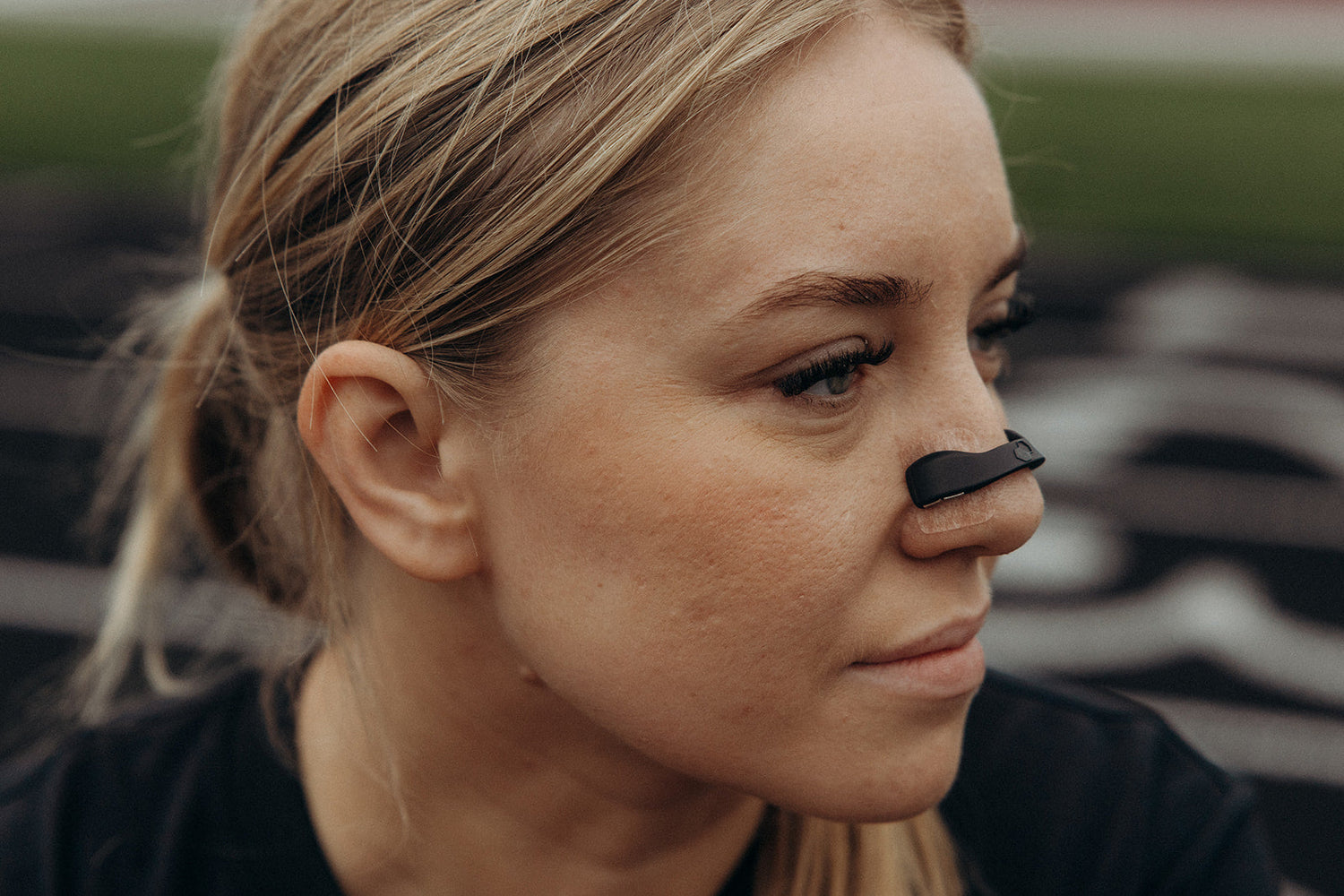How to fix a deviated septum without surgery? A deviated septum occurs when the cartilage and bone that separates your nasal cavity is off-center. You might be born with it, or a nose injury can cause a deviated septum. It is estimated that as many as 80 percent of people have a nasal septum that is off-center. Symptoms include restricted breathing, headaches, sleep apnea
How to tell if you have a deviated septum
Lean your head back and look into a mirror. (You can also take a picture of the underside of your nose.) If your nostrils are uneven, or if they’re two different sizes, you might have a deviated septum.
You might also be able to tell by taking the deviated septum self-test:
- Using your finger, hold one of your nostrils closed.
- Breathe in and notice the airflow. Be mindful about how easy or difficult it is to breathe through that nostril.
- Now, hold your other nostril closed and repeat the exercise.
- If you have difficulty breathing through one or both nostrils, you could have a deviated septum.
This test can be a helpful self-test tool. But the only surefire way to know if you have a deviated septum is to get a diagnosis from a healthcare provider.
How to fix a deviated septum without surgery:
What Does Septum Deviation Mean?
Septum deviation is a condition in which the cartilage-bone partition, or septum, in the nose is curved or slipped. If you are wondering what a nasal septum is, you can think of it as a cartilage and bone structure that divides the inside of the nose into two separate spaces. These nasal passages should normally be symmetrical.
The nose is known to be an important organ for breathing, the sense of smell, and facial aesthetics. However, some people may experience breathing problems, sleep apnea, recurrent sinusitis and other complications due to a structural problem in the nose.
Understanding Septum Deviation
The most common causes of a problematic nasal septum include:
- Nasal congestion,
- Difficulty breathing,
- Sleep apnea,
- Poor quality of sleep,
- Frequency of sinusitis (inflammation of the sinuses),
- Unexplained and recurrent nosebleeds,
- Headaches,
- Snoring
The diagnosis of septum deviation is usually made by an ENT specialist. He or she may perform a physical examination to make the diagnosis. A manual examination and medical tests can be done with a special instrument that can be used to see the inside of the nose. Imaging tests and studies are another method. Endoscopy, computed tomography (CT) or magnetic resonance imaging (MRI) are the highlights of these devices. Follow-up examinations are helpful to assess the curvature of the nasal septum and to determine if complications are due to deviation or other presence.
How do healthcare providers diagnose nasal septum deviation?
A healthcare provider will examine your nose using a nasal speculum. This handheld instrument gently spreads your nostrils open so your provider can see the inside of your nose. They’ll look at your septum to see if it affects the size of your nasal passages.
Your provider will also ask about your symptoms. They may ask questions like:
- What symptoms do you have?
- How long have you experienced these symptoms?
- Do you have difficulty breathing?
- Do you have disrupted sleep?
- Do you snore during sleep?
- Do you have a history of sinus issues or nasal congestion?
Septum Deviation Treatment Options: How to fix a deviated septum without surgery?
Although there are several options for how to fix a deviated septum without surgery, after consultation and examination, it will be clear who is eligible for which method. The treatment plan will be determined primarily based on the severity of symptoms, the quality of life of the individual and, of course, the extent of the deviation.
Non-Surgical Options
Non-surgical options, which are the subject of this blog, are also among the treatment options. As answered in the first section, there are both surgical and non-surgical methods. However, non-surgical options can be used to relieve symptoms and improve nasal breathing. Surgical intervention may be required for definite results. It should also be added that there are non-surgical options for aesthetical nasal correction.
Non-Surgical Septum Deviation Treatment
As noted above, non-surgical treatments are often used to relieve symptoms or provide a temporary solution. When septal deviation is a persistent problem and symptoms are severe, surgery is often the most effective solution. Understandably, non-surgical methods are limited, as this condition often requires surgical intervention. Therefore, it is important to consult a specialist and evaluate the appropriate options.
Non surgical treatments include intranasal sprays, antihistamines, and decongestants. These can help relieve stuffy noses and breathing problems. Applying warm compresses to reduce swelling can also provide relief.
Solutions that patients may come across during their research:
- Medications: The doctor may recommend medications to reduce nasal congestion or treat infections such as sinusitis.
- Nasal Sprays: Steroid or saline-based nasal sprays may be used to open the nasal passages and make breathing easier.
- Nose Openers: Nose openers inserted into the nose increase airflow by widening the nasal passages. This helps to unblock a stuffy nose and make breathing easier.
- Nasal Irrigation: Nasal irrigation is a procedure using saline solution to clean the inside of the nose and reduce congestion. This procedure moistens the nasal passages and clears mucus.
Apart from the fact that these methods do not provide a permanent treatment, some applications also have a negative effect on nasal health. Therefore, it is important that you do not use them without specialist advice. Surgical treatments should also be mentioned to enlighten those who suffer from this problem.
-
Nasal steroids
People with deviated septum often have discomfort and difficulty breathing, especially when they have allergies and infections. One of the most effective treatment options to alleviate allergic reactions is nasal steroids.
These are available over-the-counter also. However, it has to be kept in mind that for proper relief, this medicine needs to be used over an extended period of time. Moreover, some of the side effects that can occur are dryness, stinging, soreness in the throat and in rare instances, nose bleeds. If someone is suffering from a prolonged medical condition, they should talk to the doctor or pharmacist before using steroid nasal sprays. -
Allergic medicines
Inflammation due to an allergy can make the effects of deviated septum worse. In such cases, antihistamines can be effective. Antihistamines are available in both chewable tablets and nasal sprays. Although these can work, make sure to choose a medicine that doesn’t result in drowsiness which can otherwise interfere with driving or working. -
Nasal strips
These are like band-aids that stick on the nose and have spring-like bands. These bands help to lift the sides of the nose away from the septum, thereby opening up the nasal passages for better airflow. People should wear these at night before going to bed. Moreover, wearing these at night also reduces snoring considerably. These are easily available at local pharmacies and can be purchased without any prescription. -
Nasal dilators
Dilators of the nose open the nasal passages mechanically and decrease the resistance to the air coming inside. There are mainly two types of nasal dilators- external and internal. External nasal dilators pull from outside whereas internal nasal dilators push it from the inside. Check out our external nasal dialator. -
Nasal Valve Support
The nasal valve support is placed inside the nose and removes obstruction in the front part of the nose thereby improving airflow without any discomfort, irritation. As it is placed inside the nose, it is not noticeable to others. -
Nasal irrigations or Neti-Pot
Neti-pot is a nasal irrigation system. In a typical nasal irrigation system, the person simply pours a saline solution through the nasal cavity. This is the most natural solution to clear the mucus and relieve out sinus pressure. Moreover, this can also boost up the effectiveness of the cilia inside the lining of the nose and clear out mucus. These saline solutions are also available at local pharmacies bottled. After using a neti pot, make sure to clean it to minimize the chance of any infection. Ideally, instead of tap water use boiled and cooled water. -
Vaporizer or Humidifier
A vaporizer or humidifier is a small machine that simply adds moisture to the air. Dryness in the nose can make symptoms of deviated septum worse. Hence, breathing moist air can relieve out stuffy nose, especially if there is an episode of sinusitis. Vaporizers make steam by heating water hence, keep these away from children. In the room in which you keep the vaporizer or humidifier, ensure there is proper ventilation. Or else, the damp hair can be a perfect place for bacteria, mold and dust mites to thrive. After using the vaporizer or humidifier, make sure to clean it properly. -
Taking a hot shower
The effects of using a vaporizer and taking a hot shower are the same- breathing in moist air. Hence, taking a hot shower will help in reducing nasal congestion due to nasal obstruction caused by a deviated septum. -
Avoiding Irritants
For a person with a deviated septum, allergies are the biggest trigger and make the congestion worse. Therefore, make sure that you avoid any kind of irritant that can trigger one. Stay away from irritants such as pollen, dust mites, animals, etc. Some people are also allergic to smoke, paint fumes, household chemicals, or perfumes. Hence, stay away from these chemicals also. Some food allergens such as red wine, milk can also trigger nasal congestion. -
Natural Treatment
Another rare treatment option is Breathing Retraining Therapy. This is a natural therapy that can alleviate symptoms caused by a deviated septum. Developed in 1952, this technique is specifically designed to improve functional breathing patterns. People with a deviated septum generally tend to suffer from over-breathing and need to normalize this hyperventilation. This breathing technique aims to train the body to breathe more slowly and regularly.
Conclusion to how to fix a deviated septum without surgery
All these options can make it possible for an individual with a deviated septum to live without undergoing surgery. But there’s no surety that these cannot make the already existing medical condition worse. In severe cases, children are unable to breathe due to nasal obstruction calls for surgical intervention. ENT doctors recommend, in such cases, undergoing a septoplasty.
For someone looking for any queries related to septoplasty, can consult with an ENT specialist from Pristyn Care who can help with all the answers. Drop your query below or book your consultation today!




